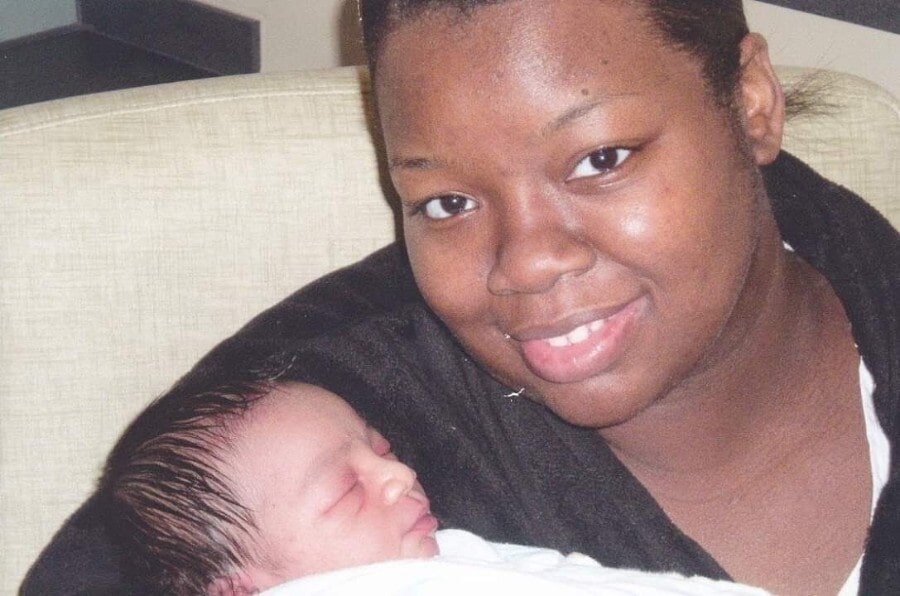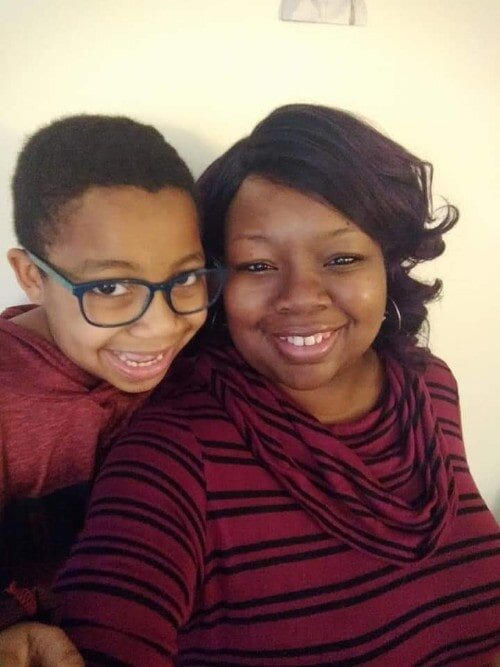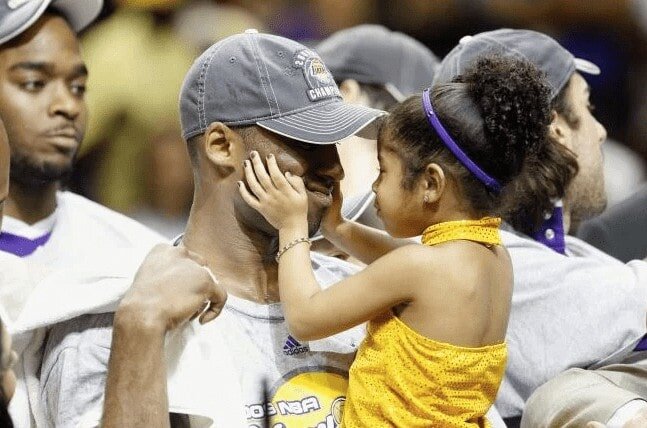Editor’s note: This article originally appeared on mlive.com. Isaiah is now 9 years old, but his issues remain the same. Please show compassion and understanding that each parent has their own journey—this is one family’s story. If you have any help, advice, or insight for Natasha, please email her at the address at the bottom of the article.
Listen to Natasha’s story or read it below.
My 8-year-old son is trying to kill me.
For the past few months, his homicidal and suicidal actions have sent us to the emergency room about 10 times. I have called Mobile Crisis Response, the county’s 24/7 mental health crisis line, more than 30 times since March for support. A handful of times, he had to be taken to the ER by ambulance because he tried to bust the windows out of the car en route.
Providers have discharged him home with me no matter how dangerous, scary, and sometimes expensive his episodes of aggression and rage have been. There has been no space for him in Michigan’s inpatient hospitals for months.
Early on, I knew Isaiah was wired differently and sought mental health services.
My son, Isaiah, is a unique, complex child full of life and energy, but that energy is sometimes too much. He loves fiercely. He is extremely protective of the people and things that he values, sometimes exhibiting violent behaviors when he feels insecure. Isaiah has lush eyelashes and bright chestnut brown eyes that make you melt when he smiles. He loves to dance. He’ll stay up day and night to build new things with Lego. Isaiah loves math and science and will readily brag about adding big numbers quickly. He is a natural leader, and he would readily give anyone all of my money if he knew there was a need.
He was about 6 years old the first time he tried to kill me, standing eerily at my bedroom door one afternoon with a long, sharp knife. I was able to get the knife without incident, but it was enough to put me on high alert.
Early on, I knew Isaiah was wired differently and sought mental health services. He was kicked out of daycares as a toddler. He struggled with highly impulsive behavior with no regard for safety, hyperactivity, and he had social development delays that often left him without friends.

Fast forward to 2019 and there was one week this spring where we were forced to live in a local hotel because home was not safe. Isaiah had attempted to jump out of his second-story bedroom window and said he wanted to kill himself. We went to the emergency room. Providers called around and there were no inpatient psychiatric hospital beds available for his age. I was very afraid for us. My first thought was to stay in a hotel until I could implement stronger safety measures at home. You generally can’t open hotel windows, there are always people around, and there would be fewer objects for him to throw and hurt us with. I was one-person with sole custody to manage my child’s health and wellness, sleep-deprived, and contending with an 85-pound child who was in a mental health crisis. I have some local family members who pitch in when they can and when it’s safe, but no one who can support us long-term with a physical presence. Despite Isaiah still being violent toward me, visitors, and hospital staff, the hospital discharged us with “PRN”—as-needed—medications, after a couple of days in the ER.

Providers consider Isaiah as a complex case. He has diagnoses of autism, ADHD and anxiety. They’re starting to add Disruptive Mood Dysregulation Disorder (DMDD), a childhood condition of extreme irritability, anger, and frequent, intense temper outbursts, to the list after his recent behavioral episodes. His IQ is in the normal range and he’s in general education classes with special education support. There are times when his large vocabulary, charisma, and charm convince people there’s not a problem. His strengths are also sometimes a barrier, especially when people only spend a few minutes with him.
I just wonder how providers could discharge us without a safety plan in place. Unfortunately, that is all they know to do in this system of care. The emergency room is there to stabilize an immediate problem and that’s it. I’ve been in the emergency room with my son trying to hang himself with his backpack and then discharged 20 minutes later because they’d already medicated him. The system is failing families like mine.
I just wonder how providers could discharge us without a safety plan in place.
We do have a team at Integrated Services of Kalamazoo (formerly Kalamazoo Community Mental Health and Substance Abuse Services) and several associated services. Services include Applied Behavioral Analysis (ABA) therapy for Isaiah and Family Support Training for me, 12 hours each week; Family Directed Respite dollars to pay for someone to give me a break (but we’re still searching for a provider); medication clinic, which gives us an opportunity to meet with a psychiatrist or mid-level provider to assess and modify his medications; and an outpatient therapist who Isaiah meets with weekly.
At one point, Intensive Crisis Services checked in daily by phone after an ER trip, but that service stops after 30 days. Unfortunately, Glen’s House, a local crisis residential facility, did not work because Isaiah was too aggressive. LINKS, an after-school program that teaches social skills in peer groups run by Family & Children Services, has been unavailable since January due to lack of staffing. All of these services were put together and are monitored by our Integrated Services supports coordinator. It still is not enough.
As I worked to gain more intensive services for Isaiah in May, news came out that a 9-year-old boy near Sturgis had killed his mother Pauline Randol one day before his scheduled appointment with a mental health clinic. News reports said that the mother had shared with doctors that she was afraid she was raising the next serial killer. I remember sharing similar sentiments about Isaiah during a Strengthening Families training I attended in 2016. I cried for days about this family’s tragedy because this level of severity is where my household exists. I had seen glimpses of it, but the intensity and frequency truly increased. I get him in for help and at each encounter, I’m told by providers that they are doing what is within their scope of practice or service. That is where they leave us.

If my child had cancer, there would be a clear action plan and resources. If he had a broken arm, there would be a clear action plan and resources. But when it comes to mental health, everything is muddled and resources are difficult to access without a lot of hoops. Not only that, but funding and resources are very limited in scope and are not always responsive to a patient’s needs. That lack of responsiveness costs each of us.
Living in a hotel was getting expensive, and I was relying on generous individuals to help pay, not any mental health agency. I was fortunate that I could lean on my village and put out an Amazon Wish List of things we needed to return home safely. Window locks, alarms, stop signs, a security camera, a latch for the front door—hundreds of dollars’ worth of items that I certainly could not afford after missing so much work. My situation was urgent but there were no local resources to pull from. We need a safe space in Kalamazoo for families that are waiting for inpatient care but can’t return home. We need funds to help families implement safety plans so they can feel secure at home.
Thankfully, he recovered physically, but the behavior challenges have persisted. He ran away from home a few times—getting as far along as Stadium Drive where four plus lanes of traffic are going 45 miles per house. He told me, “I want to die, I want to die” and ran faster as I got closer.
If my child had cancer, there would be a clear action plan and resources.
I am afraid every time I have to call 911 because my son is Black in America and he’s displaying agitated and erratic behavior, even as he’s met by law enforcement. But if I don’t call and something bad happens, I’d be blasted as a negligent parent. In all of the brokenness that I feel in dealing with this, I am pushing because there has to be a better solution for my child. It’s going to take collaborative, actionable conversations with impacted families, medical professionals, social workers, and elected officials to make things better.
I’m a witness to Isaiah’s suffering and it is unbelievable that I can’t get him the proper care in a timely fashion because there are literally not enough beds to match the need. I do not believe inpatient hospitalization is the only piece of care that will address the problem, but it’s an important piece for many children like him. He’s on medications and participating in therapies that are not working effectively outpatient. Medical professionals in an inpatient setting would be able to safely wean him off of his medications, monitor for complications, and capture a baseline for his behavior that would inform his treatment moving forward.

I recently had to resign from a job because I couldn’t be present for the 12 hours each week as scheduled. We don’t have much of a social life. Isaiah and I talked about trips to the Statue of Liberty and to the beach, both places he really wants to go, but it isn’t realistic right now. Anytime we go out, I have to wonder—are there knives out? Is the yard fenced in? Is it easy to move others out of the way if his behavior escalates?
I never rest because I have to stay so many steps ahead, keep the home environment safe and stay on top of a long list of social workers and clinicians who are often overworked, underpaid and working multiple jobs to make ends meet.
Isaiah was supposed to be placed on the waitlist in May for the only state psychiatric hospital for children his age. Integrated Services of Kalamazoo is the only agency is the county that can submit referrals there. I trusted when I was told that he was on the waitlist for Hawthorn at each ER visit. It was even noted by the hospital social workers who would come. A few weeks ago, I called Hawthorn directly because we were more than three months out from workers saying he was on the list. Hawthorn had never received a referral for Isaiah, according to the admissions representative I spoke to. Somebody dropped the ball and delayed an urgently needed service for my son. I spent the early part of September demanding answers and found out that Isaiah was only in an internal queue of kids that need inpatient services. Integrated Services staff said they would call Hawthorn weekly to see if there was space. I was a squeaky wheel and finally got the referral submitted, landing Isaiah on the waitlist last week.
I’m always ready for the worst because the worst keeps coming.
I have spent the summer carrying what I call a “go bag.” It has custody papers, some medical records, his medications, toiletries, and a change of clothes, because, in this waiting period, I never know when he will have a major crisis that I cannot manage at home. I’m always ready for the worst because the worst keeps coming.
I decided to go public on this highly sensitive, personal topic to illuminate this gross, systematic dysfunction because I cannot do what I need to do for him as a parent until the system of care becomes more responsive to the needs of Isaiah and others like him. The mother I mentioned before did not have to die at the hands of her child, but the gap in response to urgent pleas for help made it too late for them. I don’t want that to be our story.
I celebrate Isaiah in all of his triumphs—completing second grade, making friends, sharing, completing chores. I love him back to life when he’s ready to die. I cuddle him and breathe on him to help regulate him when he’s anxious. Isaiah is a beautiful boy with lots of light and joy in his soul. I will always advocate for him, and I encourage you to as well. Proper, timely mental health treatment will help Isaiah and children like him shine on.
If you are so inclined, you can make a donation to Natasha and Isaiah here.
If you or someone you know needs help, call 1-800-273-8255 for the National Suicide Prevention Lifeline. You can also text home to 741-741 for free, 24-hour support from the Crisis Text Line. If you live outside of the U.S., please visit the International Association for Suicide Prevention for a database of resources.
















